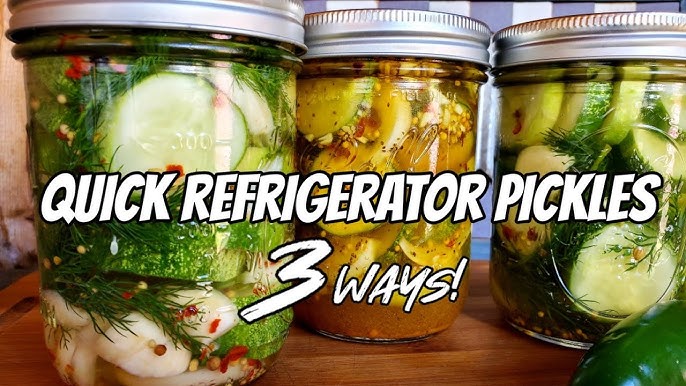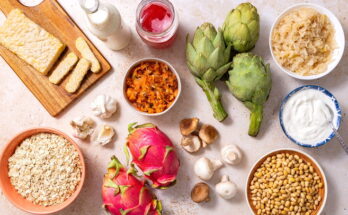Pickle Recipe: Pickling is one of the oldest methods of food preservation, dating back thousands of years. This age-old technique not only enhances the shelf life of fruits and vegetables but also creates a tangy, flavorful addition to your meals. Whether you’re a novice or an expert in the kitchen, making pickles at home is a rewarding and surprisingly easy process.
Why make pickles at home? It’s simple: you get to control the ingredients, experiment with flavors, and enjoy the satisfaction of crafting something delicious from scratch. Plus, homemade pickles are free from preservatives and artificial additives commonly found in store-bought options.
Types of Pickles You Can Make
Pickles come in many forms, each with its unique flavor profile and preparation method. The two primary types are fermented pickles and vinegar-based pickles.
- Fermented Pickles: These rely on natural fermentation, creating a probiotic-rich food that’s great for gut health.
- Vinegar-Based Pickles: These are quick and easy, relying on vinegar for preservation and a tangy kick.
From classic cucumber pickles to tangy mango and spicy jalapeño varieties, the possibilities are endless. Specialty pickles like garlic and dill offer unique flavors to jazz up any dish.
Essential Ingredients for Pickling
The magic of pickling starts with simple ingredients. Here’s what you’ll need:
- Fresh Produce: The fresher, the better. Crisp cucumbers, firm mangoes, or your choice of vegetables are key.
- Spices and Seasonings: Mustard seeds, peppercorns, chili flakes, and turmeric are common choices.
- Vinegar: Distilled white vinegar is versatile, while apple cider vinegar adds a subtle sweetness.
- Water, Salt, and Sugar: Use filtered water and pickling salt for the best results.
Each ingredient plays a vital role, so choose quality for the tastiest pickles.
Tools and Equipment Needed
Proper tools make pickling a breeze:
- Glass Jars: Opt for airtight jars to keep your pickles fresh and flavorful.
- Weights and Fermentation Lids: These help maintain a safe and stable fermentation process.
- Cutting Tools: Sharp knives and mandolins ensure even slicing, crucial for uniform pickling.
- Sterilization Supplies: Clean jars and tools are essential to avoid contamination.
Step-by-Step Pickle Recipe
Step 1: Preparing the Ingredients
Wash your produce thoroughly and slice them into desired shapes—spears, slices, or chunks. Trim off ends, especially for cucumbers, to prevent enzymes from softening the pickles.
Step 2: Making the Pickling Brine
In a saucepan, combine water, vinegar, salt, and sugar. Heat the mixture until everything dissolves. Add your spices for an aromatic brine that sets the stage for flavor.
Step 3: Packing the Jars
Pack your jars tightly with prepared vegetables. Pour the warm brine over the contents, ensuring everything is submerged.
Step 4: Processing and Sealing
Seal the jars with lids and process them in a boiling water bath for 10-15 minutes to ensure safety and longevity.
Step 5: Storage and Aging
Store the jars in a cool, dark place. Allow the pickles to sit for at least a week to develop their flavors.
Variations and Customizations
One of the best things about making pickles is the freedom to experiment with flavors. You can tweak recipes to match your personal preferences or explore regional styles from around the world. Here are a few ways to customize your pickles:
- Herbs and Aromatics: Add fresh dill, garlic cloves, or even rosemary sprigs to create complex, layered flavors.
- Spice Levels: Love a fiery kick? Add chili flakes, jalapeños, or black peppercorns for heat.
- Regional Twists: Experiment with Indian spices like fenugreek and mustard seeds, Korean gochugaru for spicy kimchi pickles, or Mediterranean-inspired oregano and lemon.
Whether you prefer a tangy crunch or a spicy zing, customization is your gateway to unique pickle creations.
Tips for Perfect Pickles Every Time
Making pickles might seem straightforward, but there are a few tricks to ensure they turn out perfectly each time:
- Cleanliness is Key: Always sterilize jars and tools to avoid contamination.
- Salt Matters: Use pickling or kosher salt, as iodized salt can cloud the brine.
- Crispness Hack: Soak cucumbers in ice water before pickling or add grape leaves to maintain crunch.
- Patience: Allow the pickles to cure for at least a week for optimal flavor.
With these tips, you’ll avoid common pitfalls and master the art of pickling in no time.
Health Benefits of Pickles
Did you know pickles can be good for you? Here’s how:
- Probiotics: Fermented pickles are rich in probiotics, which support gut health.
- Nutrient Preservation: Pickling retains vitamins and minerals in fruits and vegetables.
- Low-Calorie Snack: Pickles are a healthy, low-calorie addition to your diet, making them perfect for guilt-free snacking.
These benefits, paired with the fact that you’re reducing food waste, make pickling both a practical and health-conscious choice.
Storing and Using Your Pickles
Storage is just as important as preparation when it comes to maintaining the quality of your pickles:
- Storage Tips: Keep unopened jars in a cool, dark pantry. Once opened, refrigerate them to retain freshness.
- Shelf Life: Properly sealed pickles can last up to a year. Discard them if you notice an off smell, sliminess, or mold.
- Creative Uses: Use pickles to elevate dishes like sandwiches, burgers, salads, or even cocktails like Bloody Marys.
The possibilities for incorporating pickles into your meals are endless, making them a versatile staple in any kitchen.
Troubleshooting Pickling Problems
Even seasoned picklers encounter hiccups. Here’s how to troubleshoot common issues:
- Soft Pickles: Likely caused by improper brine ratios or using overripe produce. Always use fresh, firm vegetables.
- Cloudy Brine: This can result from impurities in salt or water. Use filtered water and pickling salt to avoid this.
- Spoilage Signs: If your pickles smell foul, have mold, or show signs of unusual fermentation, it’s best to discard them.
Learning from mistakes is all part of the journey, so don’t be discouraged if your first batch isn’t perfect.
Quick Pickle Recipes
Short on time? Try these quick pickle recipes that deliver instant gratification:
- 24-Hour Cucumber Pickles: Mix sliced cucumbers, vinegar, sugar, and salt. Refrigerate overnight for a tangy snack.
- Instant Radish Pickles: Combine radish slices, rice vinegar, sugar, and a pinch of salt for a zesty side.
- Refrigerator Pickles: These don’t require processing—just pack veggies in brine, refrigerate, and enjoy within two weeks.
Quick pickles are perfect for beginners or when you’re craving a fast pickle fix.
The Joy of Pickling with Family
Pickling is more than a culinary task; it’s an experience. Gather your family and enjoy the bonding that comes with creating something together. Kids can help with simple tasks like washing vegetables or arranging them in jars. These moments create memories and instill valuable skills for future generations.
Scaling Your Pickling Adventures
Once you’ve mastered the basics, why not scale up your pickling game?
- Batch Pickling: Great for hosting parties or giving unique, homemade gifts.
- Small Business Potential: Many successful pickle brands started in home kitchens.
- Community Engagement: Join pickling clubs or forums to share tips and learn from others.
Whether you’re pickling for fun or profit, the sky’s the limit when it comes to this timeless craft.
FAQs about Pickle Recipe
1. What ingredients do I need to make pickles at home?
To make pickles at home, you typically need cucumbers, vinegar, water, salt, sugar, garlic, and spices such as dill, mustard seeds, and peppercorns. You can customize the recipe with additional herbs and seasonings to suit your taste.
2. How long do homemade pickles take to be ready?
Homemade pickles can take anywhere from 24 hours to several weeks to be ready, depending on the recipe and your desired level of flavor. Quick pickles (refrigerator pickles) are ready in as little as a day, while fermented pickles take longer.
3. Can I reuse pickle brine for a new batch?
Yes, you can reuse pickle brine for a new batch of pickles, but the flavor may be less intense. It’s recommended to boil and refresh the brine with additional vinegar and spices for the best results.
4. What’s the best type of vinegar for pickling?
Distilled white vinegar is the most common choice for pickling because it has a neutral flavor and ensures a clear brine. Apple cider vinegar can also be used for a tangy flavor, but it may slightly alter the color of your pickles.
5. How should I store homemade pickles?
Homemade pickles should be stored in a clean, airtight jar in the refrigerator. If properly sealed and refrigerated, they can last for several weeks to months.
6. Are pickles healthy?
Pickles are low in calories and can provide beneficial probiotics if fermented naturally. However, they are high in sodium, so it’s best to enjoy them in moderation.
7. Can I pickle other vegetables besides cucumbers?
Absolutely! You can pickle carrots, onions, radishes, green beans, and even fruits like watermelon rind. The process is similar and allows for a variety of flavors and textures.
Conclusion
Making pickles at home is more than just a kitchen project; it’s a journey into flavor, creativity, and tradition. With the right ingredients, tools, and techniques, anyone can master the art of pickling. The satisfaction of crafting your own pickles and the joy of sharing them with others make this hobby well worth the effort. So grab your jars, pick your produce, and start your pickling adventure today!



